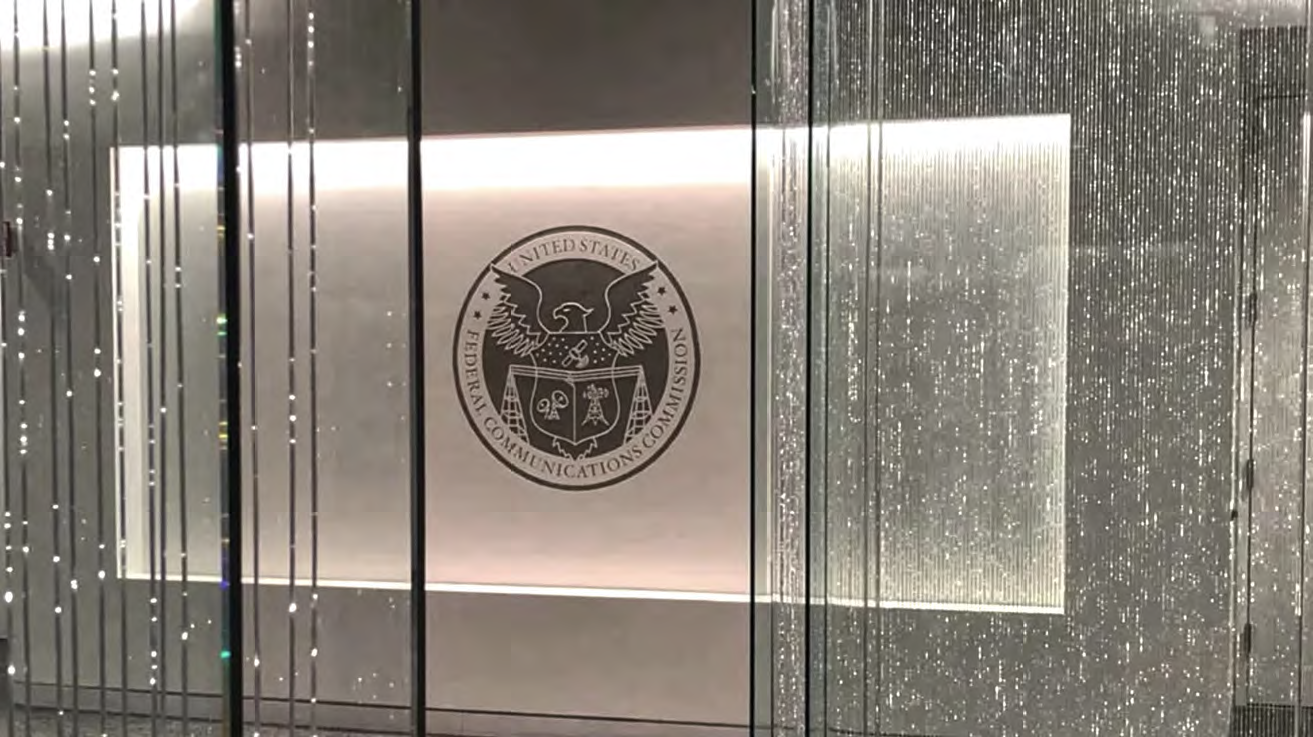Curt Blake, senior of counsel, and Sophia Galleher, associate, Wilson Sonsini
On April 7, 2025, the Federal Communications Commission (FCC) unveiled a draft Notice of Proposed Rulemaking (NPRM) that, if adopted, would kickstart a review of the decades-old spectrum-sharing regime between geostationary (GSO) and non-geostationary (NGSO) satellite systems across key
Ka- and Ku-band frequencies—specifically, the 10.7–12.7 GHz, 17.3–18.6 GHz, and 19.7–20.2 GHz bands (collectively, the Bands).1

The draft NPRM is one of several spectrum- and space-related items introduced under FCC Chairman Brendan Carr’s leadership, reflecting his broader push to open up more spectrum for licensed, unlicensed, and shared commercial use.2
Notably, this NPRM considers—and would adopt—a 2024 SpaceX petition asking the FCC to “sunset the obsolete and spectrally inefficient” equivalent power flux density (EPFD) limits, potentially setting the stage for what could be a high-stakes showdown among satellite operators.3
Codified in Article 22 and Resolution 76 of the International Telecommunication Union’s (ITU) Radio Regulations, these EPFD limits have become a point of contention among satellite operators, both domestically and internationally.
At the ITU’s 2023 World Radiocommunication Conference (23-WRC), a proposal to review these limits became one of the most divisive agenda items, pitting large NGSO operators such as SpaceX against traditional GEO operators and countries that have been left out of the Low Earth Orbit (LEO) boom.
That fault line continues at the FCC, where SpaceX’s petition has drawn opposition from established GSO incumbents—namely, Viasat and EchoStar.
The FCC is scheduled to vote on the draft NPRM at its April 28, 2025, open meeting. If adopted, comments will be due 45 days after the item is published in the Federal Register, with reply comments due 30 days later.
Background and Overview of Current Regulatory Regime
Though highly contentious, the need to update the 1990s-era GSO/NGSO spectrum-sharing framework is arguably growing. In the span of just a few years, the satellite marketplace has experienced unprecedented growth and innovation.
From 2019 to 2023, the number of satellite applications pending before the FCC’s Space Bureau doubled to more than 56,000, with new NGSO operators launching thousands of satellites.4
By one estimate, between 2021 and 2023, the supply of high-throughput satellite capacity tripled, with NGSO operators accounting for over 90 percent of the net supply.5
Meanwhile, incumbent GSO operators have continued to upgrade and deploy increasingly powerful satellites with enhanced capabilities.
These NGSO and GSO satellite operations rely on a complex spectrum access and sharing system that enables different communications services and technologies—including terrestrial services—to coexist in the same spectrum bands.
For example, in the Ka- and Ku-bands, NGSO and GSO fixed-satellite service (FSS) networks share FSS allocations and must also operate compatibly with other networks and services, such as broadcasting-satellite service (BSS) networks and terrestrial communications systems.6
On the NGSO side, new entrants, such as SpaceX, argue that the current EPFD limits—developed under outdated assumptions and spectrum management techniques—penalize NGSO systems and ultimately harm American consumers by allowing GSO operators to obstruct competition and stifle innovation.7
As noted above, EPFD limits were a point of major contention at the WRC-23, where satellite operators sparred over whether to adopt a proposal to review the current framework.
While the WRC-23 declined to adopt a formal agenda item, it invited the ITU Radiocommunication Sector (ITU-R) to conduct technical studies on the EPFD limits and report its findings at WRC-27, “without immediate regulatory consequences.”8
In August of 2024, SpaceX filed a petition urging the FCC to initiate a rulemaking proceeding to, among other things, adopt a new domestic NGSO-GSO spectrum sharing framework for Article 22 bands below 30 GHz (i.e., the Bands).
SpaceX noted its support for revising EPFD rules at the ITU but further lamented waiting for the international process to play out “will leave American consumers waiting for years after they have already had their broadband service unnecessarily restricted for decades” by a spectrum-sharing regime that is “critically out of date.”9
Notice of Proposed Rulemaking
While grounded in the issues raised by SpaceX’s petition, the draft NPRM stops short of offering any tentative conclusions. Instead, it seeks to develop a “substantial technical record” to inform potential updates to the spectrum-sharing framework between NGSO FSS systems and GSO FSS and BSS networks in the Bands, while ensuring that any rule changes would continue to protect co-frequency terrestrial services from harmful interference.10
To support that effort, the draft NPRM poses a wide range of questions about whether the current EPFD limits “overprotect” modern GSO networks—and what levels of protection (short-term and long-term) do GSO networks actually reasonably require.
The draft NPRM further asks whether the current EPFD limits “overly restrict” modern NGSO operations and to what extent NGSO systems might be able to offer higher capacity or better service in certain areas with less restrictive limits.
The FCC also invites broader input on the foundational modeling assumptions that should guide NGSO-GSO spectrum sharing, as well as whether an alternative sharing framework could be implemented in the Bands.
For example, the NPRM asks whether the FCC should require GSO and NGSO operators to coordinate in good faith, or, in the absence of coordination, whether the burden of interference protection should shift—i.e., require GSO operators, rather than NGSO systems, to avoid causing harmful interference.
The FCC’s decision to initiate this proceeding reflects a willingness to engage domestically on issues that are typically handled through international forums. This approach could help inform—or potentially accelerate—an ITU-led process that remains in the early stages of technical study.
 The draft NPRM is expected to generate substantial technical input and vigorous stakeholder engagement and could ultimately lay the groundwork for a fundamental shift in how satellite operators access and share spectrum.
The draft NPRM is expected to generate substantial technical input and vigorous stakeholder engagement and could ultimately lay the groundwork for a fundamental shift in how satellite operators access and share spectrum.
The views expressed in this article reflect those of the author himself and do not necessarily reflect the views of his employer and its clients.
References
1 See Modernizing Spectrum Sharing for Satellite Broadband, Draft Notice of Proposed Rulemaking, SB Docket No. 25-157 (rel. April 7, 2025) (Draft NPRM), https://www.fcc.gov/document/modernizing-spectrum-sharing-satellite-broadband
2 See Upper C-band (3.98 to 4.2 GHz), Notice of Inquiry, GN Docket No. 25-59 (2025) (seeking comment the potential repurposing of the Upper C-Band for more intensive spectrum use)); see also Space Bureau and Wireless Telecommunications Bureau Grant SpaceX Waiver Request, Order, GN Docket No. 23-135 (2025).
3 See SpaceX Petition for Rulemaking, Revision of the Commission’s Rules to Establish More Efficient Spectrum Sharing between NGSO and GSO Satellite Systems, RM-11990 (filed Aug. 9, 2024) (SpaceX Petition), https://www.fcc.gov/ecfs/document/10809160739016/1
4 Expediting Initial Processing of Satellite and Earth Station Applications, Report and Order and Further Notice of Proposed Rulemaking, 38 FCC Rcd 8838 (2023) https://docs.fcc.gov/public/attachments/DOC-396892A1.pdf
5 See Communications Marketplace Report, GN Docket No. 24-119, FCC 24-136 (2024), https://docs.fcc.gov/public/attachments/FCC-24-136A1.pdf.
6 Viasat Opposition to SpaceX Petition (filed Nov. 1 2024); EchoStar Opposition to SpaceX Petition (filed Nov. 1 2024)
7 SpaceX Petition
8 See Draft NPRM.
9 Id.
10 Draft NPRM.

Curt Blake
Authors Curt Blake (Senior Columnist to SatNews Publishers) and Sophia Galleher are with Wilson Sonsini Goodrich & Rosati. Curt Blake, Senior of Counsel, is an attorney and senior executive with more than 25 years of experience leading organizations in high-growth industries— and more than 10 years as the CEO of Spaceflight, Inc.— at the forefront of the New Space revolution. Curt has extensive expertise in strategic planning, financial analysis, legal strategy, M&A, and space commercialization, with deep knowledge about the unique challenges of New Space growth and the roadmap to success in the that ecosystem.

